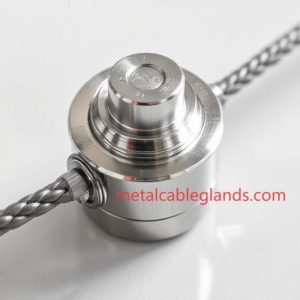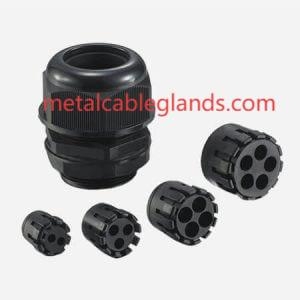In modern industrial wiring systems, sealing and protecting cable entries are essential for both safety and longevity. Whether used in manufacturing plants, offshore installations, or data center infrastructure, the right fitting makes a significant difference. In many scenarios, engineers choose a Conduit Gland to ensure that cable terminations remain secure while resisting mechanical stress, dust, and moisture. With multiple thread types, materials, and sealing methods available, selecting the right model requires an understanding of both the conduit system and the operational environment.
A Conduit Gland is designed to connect and seal the end of a conduit to an enclosure or piece of equipment. It prevents contaminants from entering and helps maintain the ingress protection rating of the enclosure. These glands often feature compression seals or clamping mechanisms to hold the conduit firmly in place, reducing vibration and movement that could otherwise compromise connections. Depending on the application, they can be made from brass, stainless steel, aluminum, or reinforced plastics, each material offering its own set of benefits in terms of corrosion resistance, mechanical strength, and weight.
In heavy-duty environments such as marine operations or chemical processing plants, corrosion resistance becomes a top priority. Stainless steel conduit glands, for example, provide excellent performance in saline or corrosive atmospheres, while nickel-plated brass options combine durability with cost-effectiveness. For indoor or less demanding conditions, high-grade polyamide glands offer lightweight installation without sacrificing protection. HJSI, a trusted manufacturer from Zhejiang, ensures that its conduit glands meet stringent quality control standards to perform reliably in challenging conditions.
Thread type compatibility is another critical factor. Mismatched threads can lead to poor sealing, potential water ingress, and mechanical instability. International projects often require glands that can adapt to different thread standards, including metric (M), PG, NPT, or BSP. HJSI’s product range addresses this challenge by offering a variety of thread options and precise machining tolerances. This flexibility makes them suitable for installations in multiple countries without extensive modification to enclosures or equipment.
For hazardous area applications, such as petrochemical refineries or mining sites, conduit glands may need to comply with explosion-proof or flameproof requirements. These specialized designs are engineered to prevent the propagation of flames or sparks into surrounding areas in case of an electrical fault. They also maintain sealing integrity under extreme pressure changes, ensuring that both personnel and equipment remain safe. HJSI works closely with industry partners to design and supply glands that meet these strict safety certifications.
Ease of installation plays a significant role in project efficiency. Glands with ergonomic designs, integrated sealing rings, and simplified tightening mechanisms help reduce assembly time on-site. They also lower the risk of improper fitting, which can compromise system reliability. Many of HJSI’s conduit gland models are designed with installation speed in mind, helping contractors meet tight deadlines without sacrificing performance. Additionally, some models incorporate swivel or angled fittings, allowing for more versatile cable routing in compact or awkward spaces.
In certain applications, environmental sealing is just one part of the requirement—mechanical retention is equally important. Conduit glands often include clamping inserts or compression sleeves that grip the conduit firmly, preventing pullout under strain. This feature is critical in environments with frequent equipment movement or vibration, such as mobile machinery or automated production lines. HJSI’s engineering team emphasizes precision in these components to ensure consistent performance over the lifespan of the installation.HJSI’s comprehensive range of conduit glands offers solutions for diverse industrial needs, from compact control panels to large-scale infrastructure projects. By combining robust materials, precise engineering, and compliance with global standards, their products enable safe, efficient, and long-lasting conduit terminations. More details about their product line can be found at https://www.metalcableglands.com/product/.





